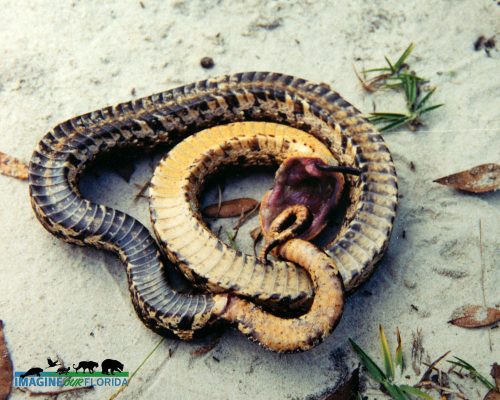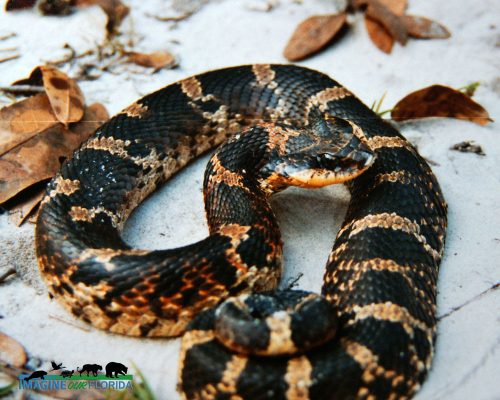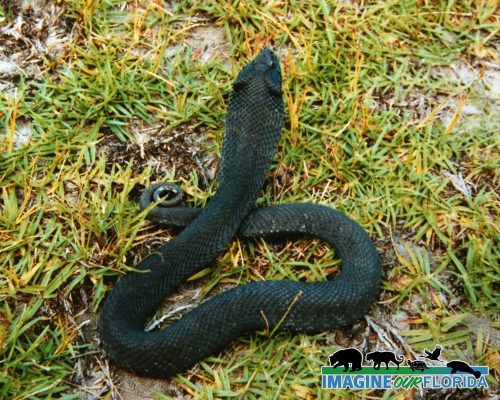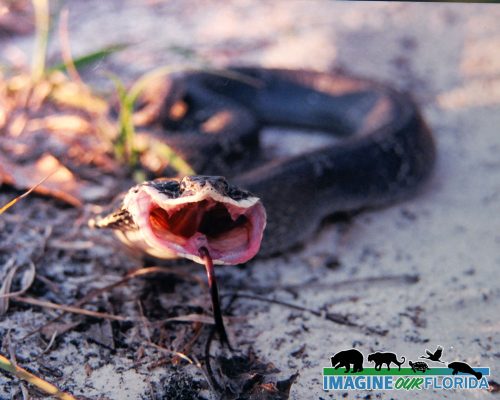Eastern Hognose Snakes (Heterodon platirhinos) are found throughout Florida, with the exception of the Keys. Their habitat is diverse and includes scrub, sandhills, turkey oak woodlands, hardwood hammocks, pine woodlands, meadows, and even cultivated fields. Hognose snakes secrete a mild venom that is toxic to their prey. They are not known to cause serious injuries to humans; however, some people may show signs of an allergy if bitten.
Hognose snakes are thick-bodied and vary in color from solid gray or black to various shades of brown, yellow, orange, olive, or red with large, randomly shaped markings. The underside can be off-white, gray, or yellow, with the bottom side of the tail lighter in color. An average adult grows to 20-35 inches. Hognose snakes breed in spring. Females lay 15-25 leathery eggs in sandy soil or under logs. In 1-2 months, the hatchlings break free of their eggs and are 6 1/2 to 9 1/2 inches long.
Active only during daylight hours, Hognose snakes use their blunt noses to search through soil and leaf litter for their meals. They may dine on frogs, insects, salamanders, and invertebrates, but toads are their favorite dinner. When a toad is threatened, it will puff itself up. Immune to the toad’s poison, Hognose snakes are equipped with rear fangs, which enable them to pop the toad-like a balloon before swallowing it whole.
Eastern Hognose Snakes are best known for their dramatic display when warding off danger. Also known as a Puff Adder, a hognose snake will suck in air, flatten its head, rise like a cobra, and hiss when a threat is detected. With its mouth closed, it may strike. If this display does not scare away the predator, the hognose will flip itself over and imitate death. It may convulse, regurgitate, and emit foul-smelling fecal matter before becoming completely still with its mouth open and tongue hanging out. When the danger passes, the Hognose snake will simply roll over and get on with enjoying its day.
Photo Credit: Andy Waldo




